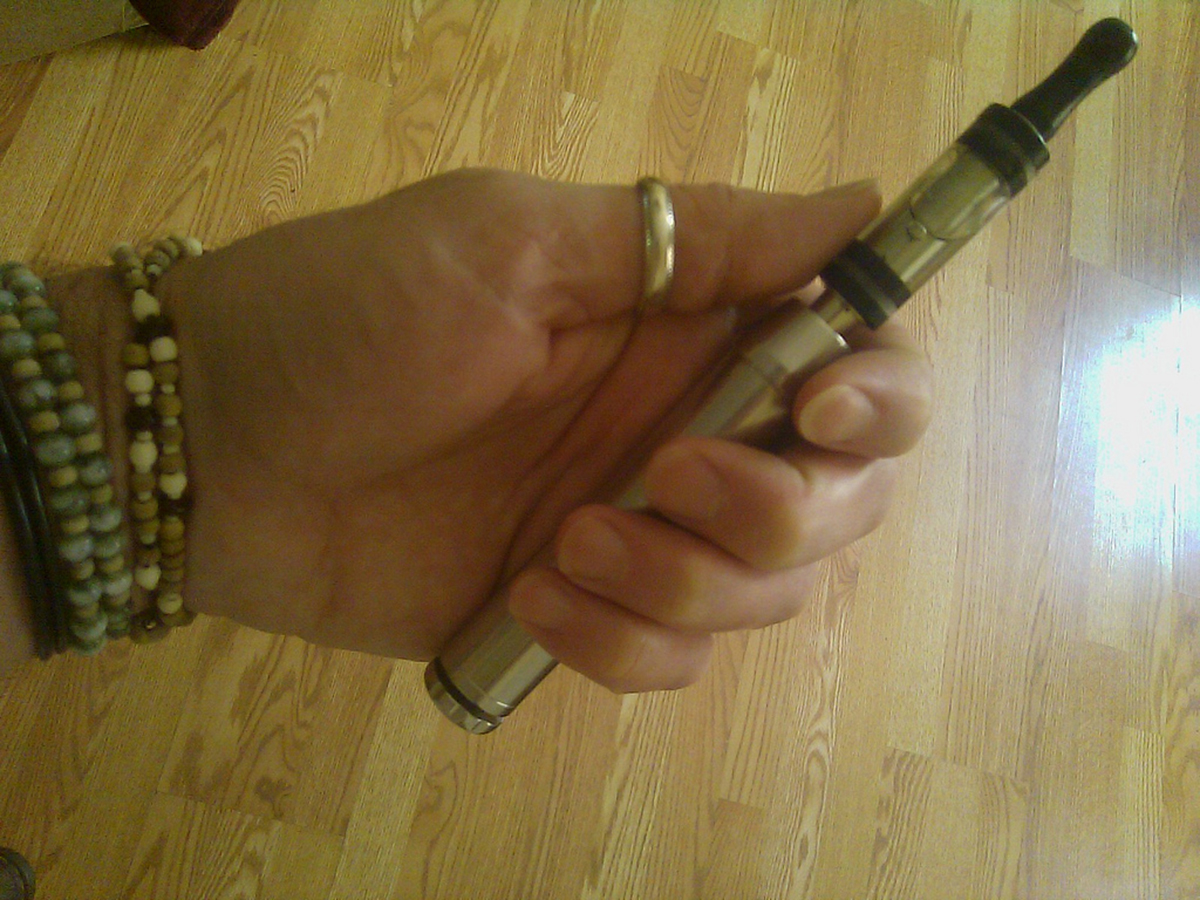The electronic or E-cigarette is a nebulizer device that looks like a cigarette and feels like a cigarette that creates an aerosol mist that the user can inhale like cigarette smoke. Although the idea of using heated air as a tobacco smoke replacement was explored in the 1960's, the modern E-cigarette is the invention of Chinese pharmacist named Hon Lik, who released an ultrsound device in the shape of a cigarette as the first commercially available E-cigarette in 2000.

Vibrating the liquid releases the mist, which is inhaled by the E-cigarette user. Most users of E-cigarettes prefer to get their hit of nicotine as they use the device, but some users of E-cigarettes prefer no nicotine at all and other users prefer to use a solution that provides even more nicotine than the typical cigarette.
But most countries prohibit advertising E-cigarettes as a means of smoking cessation, and the use of E-cigarettes may have some surprising side effects. Here are three essential facts about E-cigarettes users need to know.
1. E-cigarettes are seen as a "gateway drug" to smoking hookahs.
As odd as it may sound, one of the reasons advertising of E-cigarettes is restricted in some countries is that public health authorities were concerned that use of the device could lead to habitual use of other alternatives to conventional tobacco use, such as the hookah or hookah steam stones.
2. The more often you smoke, the less likely you are to have tried E-cigarettes.
Researchers at Mississippi State University in the USA reported in 2012 that 25% of people who smoked cigarettes every day had tried cigarette alternatives (E-cigarettes, snus, "chew," hookah pipes, hookah stones, and dissolvable tobacco products), but 39% of people who smoke occasionally had tried them. About 7% of people who have never smoked any conventional cigarettes have tried an alternative nicotine delivery device such as an E-cigarette.
3. If you're trying to quit, E-cigarettes may be what you need to replace the feel of holding a cigarette.
Researchers at the Centro per la Prevenzione e Cura del Tabagismo - CPCT at the Università di Catania in Italy note that only 3 to 5% of people who break the habit of smoking are still cigarette-free six months later. They documented three cases in which the most difficult issue was not nicotine replacement but the habit of holding a cigarette, and using E-cigarettes made it possible to stop smoking regular cigarettes for good. Nicotine patches, they found, do not address the need for the ritual of smoking a cigarette.
Seven More Essential Facts About E-Cigarettes
One of the most important consumer safety warnings about E-cigarettes concerns the choice of the solution used to make the aerosol.

4. Sometimes aerosol solutions made with propylene glycol aggravate underlying health conditions.
Propylene glycol is an approved food additive that makes the drops in the mist emitted by the E-cigarette just a little "stickier" so they feel more like tobacco smoke as they pass through the throat.
In rare cases, sensitive individuals may experience some side effects from the excessive use of propylene glycol. These may include unusually slow heart rate (bradycardia) in adults and asthma, eczema, and hay fever in teens or children. We don't, of course, recommend E-cigarettes or any other kind of cigarettes for children. But if this is a problem, simply change to a different brand of aerosol that contains the ingredient "vegetable glycerin."
5. Using an E-cigarette can reduce your desire to smoke.
If you are trying to cut down on regular cigarettes, using an E-cigarette can cut down on the craving to smoke, but there's a catch. You have to use an aerosol solution that contains nicotine, and you have to use just E-cigarettes, not E-cigarettes and regular cigarettes.
6. People who use E-cigarettes intentionally to cut down on smoking get a range of results.
In another study at the Centro per la Prevenzione e Cura del Tabagismo, mentioned earlier in this article, about 1 in 8 users of E-cigarettes was able to kick the habit of smoking completely in six months. About 1 in 3 was able to reduce the number of cigarettes smoked by 50%. This means that for 50% of users, E-cigarettes are primarily a way to avoid the worst effects of tar and carcinogens in tobacco smoke.
7. E-cigarettes don't cause their users to get "winded" the way regular cigarettes do, although they do temporarily reduce lung capacity.
Researchers at the Centre for Research and Technology Thessaly in Greece tested lung capacity in volunteers after they smoked regular and E-cigarettes. They also measured the effects of exposure to second-hand smoke. Smoking a regular cigarette reduced lung capacity by 7% an hour later. Smoking an E-cigarette reduced lung capacity 3%, and exposure to second-hand smoke reduced lung capacity by 2%.
8. Nearly everyone who uses E-cigarettes has a short-term problem with dry mouth or dry cough.
Usually problems with dry mouth and dry cough subside after about 3 months of regular use.
9. Using E-cigarettes may enhance your brain power.
Psychologists at the University of East London have found that smokers of E-cigarettes get a temporary boost in their ability to make "time-related" or "prospective" memories, remembering to do something at a specific time.
10. E-cigarettes are the easiest way to cut back on smoking for people who take psychotropic medications.
Many people who have a psychiatric diagnosis have a smoking addiction. The drugs that are used to help control severe, debilitating tobacco addictions (Wellbutrin/bupropion, for example) can't be used with certain drugs used for mental health. E-cigarettes are often the best way to help people who have to stay on psychiatric meds cut back on their use of tobacco.
- Farsalinos KE, Romagna G. Chronic idiopathic neutrophilia in a smoker, relieved after smoking cessation with the use of electronic cigarette: a case report. Clin Med Insights Case Rep. 2013.6:15-21. doi: 10.4137/CCRep.S11175. Epub 2013 Jan 24.
- Goniewicz ML, Knysak J, Gawron M, Kosmider L, Sobczak A, Kurek J, Prokopowicz A, Jablonska-Czapla M, Rosik-Dulewska C, Havel C, Jacob P 3rd, Benowitz N. Levels of selected carcinogens and toxicants in vapour from electronic cigarettes. Tob Control. 2013 Mar 6. [Epub ahead of print]
- Photo courtesy of christopher cornelius by Flickr: www.flickr.com/photos/insidious_plots/6973584382

